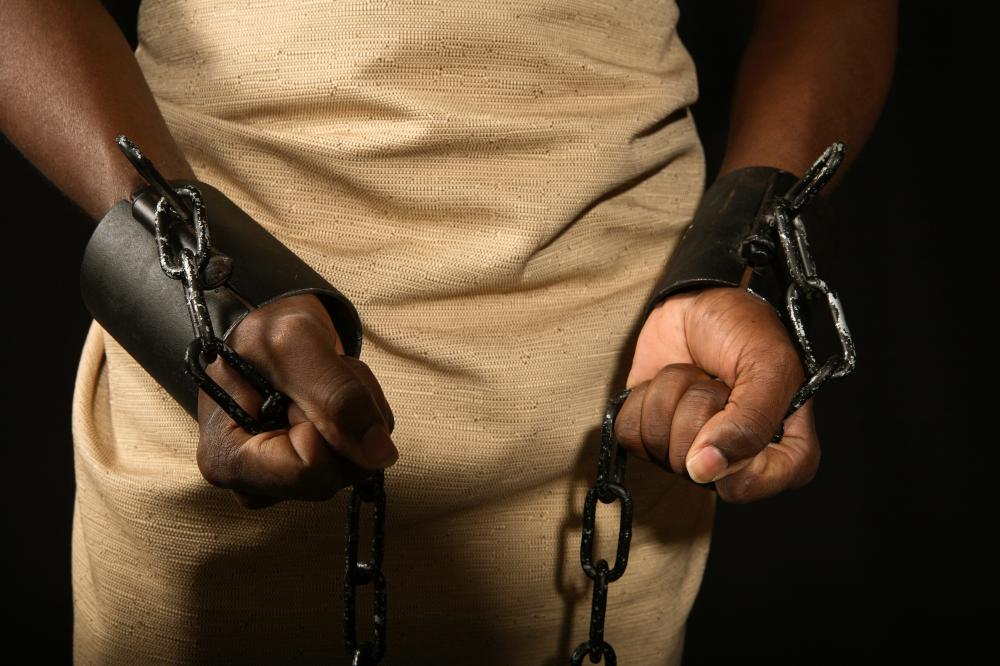At WiseGEEK, we're committed to delivering accurate, trustworthy information. Our expert-authored content is rigorously fact-checked and sourced from credible authorities. Discover how we uphold the highest standards in providing you with reliable knowledge.
What Was Bleeding Kansas?
Bleeding Kansas, also known as Bloody Kansas, was a period of violence over the issue of allowing slavery in what was then the Territory of Kansas. It lasted about five years, from the signing of the Kansas-Nebraska Act until a state constitution was adopted. The conflict between pro-slavery forces, often from the neighboring slave state of Missouri, and anti-slavery forces, composed of abolitionists and members of the Free Soil movement, took the lives of over 200 people in all. Most famous of the bloody incidents that gave Bleeding Kansas its name are the Sacking of Lawrence, the Pottawatomie Massacre, and the Marais de Cygne Massacre.
The Kansas-Nebraska Act was formulated to gain southern support for the creation of the Kansas and Nebraska territories. It allowed residents to vote on whether slavery would be allowed in each place. However, this was a violation of the Missouri Compromise of 1820, which had prohibited slavery in territories north of a certain latitude, including the land which would become Nebraska and Kansas. Despite northern outrage, the bill was passed on May 30, 1854, forming the Kansas and Nebraska territories.

Nebraska was far north enough that is was never likely to become a slave state. The majority of settlers in the Kansas Territory were anti-slavery as well, but elections held in the fall of 1854 and spring of 1855 established a pro-slavery government there. This was because of men known as Border Ruffians or Bushwackers — thousands of pro-slavery Missouri residents, often armed and threatening violence — who crossed the border to cast ballots in the Kansas elections. The government adopted the harsh Missouri slave code, made it illegal to speak or write against slavery, and retroactively legalized the many Missourian votes that had established their government. In reaction, Kansas settlers calling themselves Free Soilers established another, anti-slavery state government.
The federal government recognized the pro-slavery governing body as the official state government, a decision which figured into the first large-scale act of violence in Bleeding Kansas. Many leaders of the anti-slavery government lived in Lawrence, and pro-slavery forces decided to go there to arrest them. This, in turn, led to burning and looting in the city, but no one was killed. In retaliation, abolitionist John Brown led a small group he called the Army of the North to murder five pro-slavery settlers in the town of Pottawatomie Creek — an act which became known as the Pottawatomie Massacre.
Violence escalated after the events at Lawrence and Pottawatomie Creek. One of the bloodiest events of the period was the Marais de Cygne Massacre, in which five men were killed, and five more wounded, by pro-slavery Missourians in May of 1858. This was one of the last violent acts in Bleeding Kansas. A free state constitution was adopted the following summer, though Kansas would not become a state until 1861, after the secession of the Confederate states.
AS FEATURED ON:
AS FEATURED ON:











Discussion Comments
@littlerascal - You are referring to the raid that took place during the Civil War, in 1863. The attack on Lawrence in 1856 was in response to the pro-slavery sheriff being run out of town by the citizens of the town. An army of pro-slavery people, mostly from Missouri, came to the town to destroy the Free State Hotel, where an anti-slavery legislature was meeting. They burned the building but the stone walls were still standing. The hotel is still there in downtown Lawrence today.
Wasn’t this sacking of Lawrence the famous raid made by Quantrill and his men? Weren’t Jesse and Frank James part of this event?
Post your comments